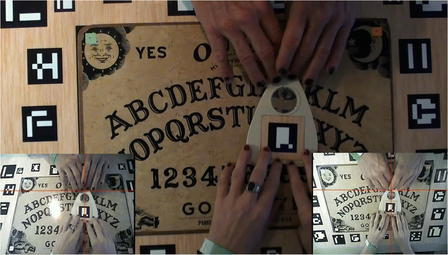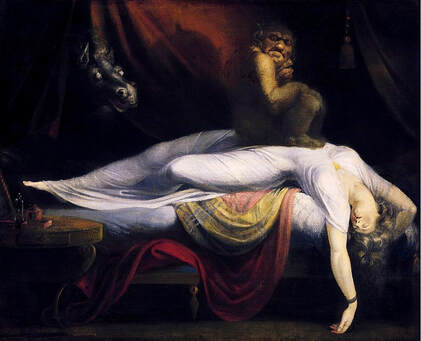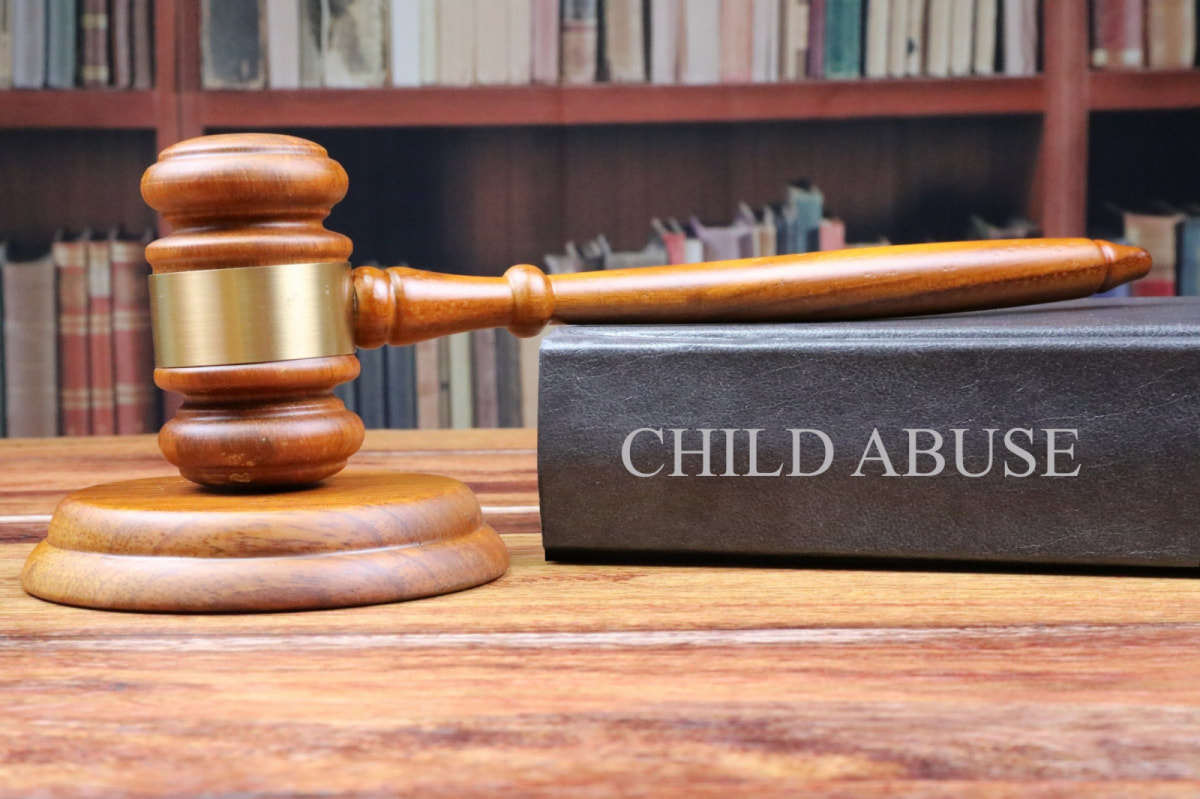|
5/17/2024 The Emotional Perils of Child Testimonies and the Potential for Descent into MadnessRead NowBack in 1691 in the town of Salem in Massachusetts, a group of girls started exhibiting strange behaviors including altered speech, convulsions, and trance-like states. The local physician examined the girls and concluded that they were victims of witchcraft. The town’s government accepted this diagnosis and asked the girls to name their tormentors, whom they proceeded to jail and try in court for witchcraft. Salem spiraled into madness as the girls’ accusations placed hundreds of innocent people in jail with twenty of them being led to the gallows. One could look upon this case as an incident from a long-gone era when people still operated based on superstition, as science had not yet studied mental illness in its many facets. However, there are some leftovers from these times that still linger in our societies. I saw a remarkable documentary on Netflix called “The Outreau Case: A French Nightmare”. It all began in 2001 when social workers raised concerns about the behavior of the children of a family that lived in the town of Outreau in France. The children were questioned, and evidence of sexual abuse by their parents emerged. When the children were examined by phycologists, they were deemed to be credible witnesses. The prosecution of the case was carried out by a young and inexperienced magistrate who was eager to make a name for himself. After the parents were arrested, they confessed to the charges, but then the mother implicated other people in the abuse, which was in turn supported by additional testimony from the children. This was followed by more accusations and more confirmatory statements from the children, which escalated into a vicious feed-forward cycle that implicated more than 40 adults and identified dozens of more children as potential victims of abuse. Of the adults named in the testimony of the mother and the children, a dozen were arrested and held in jail for periods of one to three years. The whole affair was chronicled by French newspapers with sensationalist headlines about a vast pedophile ring which sparked outrage. In a bizarre twist, one of the persons implicated testified that he had witnessed the murder of a little girl, which fanned the flames of the scandal, but the alleged girl’s body was never found. After five years and two trials, where the mother ultimately admitted to lying when she implicated others, and where some of the children also admitted to lying or their testimonies were found to be rife with inaccuracies, all the extraneous people implicated in the crime were found not guilty. One of the defendants died while in jail, and the lives of the others were wrecked with some people being ostracized by family members, friends, and acquaintances, and losing their jobs and their businesses. At the same time, the outcome of the case sparked claims of a coverup and related conspiracies. The United States had gone through something similar during the 1980s and early 1990s with the day-care child abuse hysteria during which many day-care providers were accused and some were convicted of child abuse based on the testimonies of children. The children in these cases were taken away from their parents and repeatedly and aggressively questioned by overzealous police and social workers in ways that ended up manipulating their memories. Some children ended up testifying that they were forced to participate in orgies, and that they witnessed people partaking in satanic rituals where they killed babies and drank their blood. This led to fear-inducing headlines in newspapers across the nation that just fueled the panic. In the vast majority of the cases, the people arrested were not convicted, and those convicted had their convictions overturned, all due to lack of any evidence that corroborated the testimony of the children. The aftermath of the case left a trail of broken lives and lingering social distrust. Whether children’s testimony is more reliable than that of adults has been a very controversial topic in the psychological and legal fields. The early view that children’s testimonies are inherently more unreliable compared to those of adults has been revised in recent years. However, there is ample experimental evidence that children can be induced to recall things that did not happen or even lie when repeatedly questioned in a biased manner under coercive situations by parents or authority figures. For this reason, it is important that those questioning children follow specific forensic interviewing protocols which take into account the age and language capabilities of the children. This is also important because real pedophiles in their defense will poke holes in the testimony of children if it was obtained inappropriately, which could allow them to go free. The Outreau case involved an overzealous magistrate who was willing to accept the accusations made by the mother of the children, who in turn was willing to keep telling him what he wanted to hear. The day-care sex abuse hysteria in the United States involved prosecutors and other individuals determined to find what they were looking for even if they had to coerce it out of the children. However, one of the greatest problems I see in these cases, at least in the initial phases where arrest warrants are issued and suspects are indicted and jailed awaiting trial, is the uncritical acceptance of the testimony of children. In our societies child abuse is a very emotional topic, and children are often viewed as paragons of innocence. When a child upon being questioned seems to provide evidence that implicates an adult in wrongful conduct, the visceral emotional reaction of many people favors the uncritical acceptance of the child’s testimony regardless of its context, how it was obtained, or whether additional corroborating evidence is present. A recent resurgence of the emotionalism characteristic of this mindset was the QAnon phenomenon of a few years ago when millions of people ended up believing that there is a worldwide cabal of satanic cannibalistic pedophiles that includes prominent political and entertainment celebrities. I debunked all of the QAnon claims and even engaged several of these individuals through social media, but it was pointless. As soon as you questioned their claims, they would accuse you of being part of the conspiracy! Now imagine if QAnon adherents had been in a position to fully wield the power of the judicial branch of our government. From Salem to Outreau, the day-care child abuse hysteria, and QAnon, the potential for descent into madness over the emotional issue of child abuse is still ever present in our societies, and now it can be easily amplified many times by the far-reaching power of the media. Thankfully, we have past experience and scientific studies to guide us in implementing the proper methods to deal with child witnesses and to identify testimony that has been wrongfully obtained or which is unsupported by evidence. The child abuse image by Nick Youngson from Pix4free is used here under a CC BY-SA 3.0 license.
0 Comments
 Using the Ouija Board Using the Ouija Board Human beings have used devices such as pendulums or dowsing rods for the purposes of divination for hundreds of years. By comparison the Ouija board is a late comer to this assortment of divination devices. In the United States, the businessman, Elijah Bond, patented the first Ouija Board, and his company, Kennard Novelty Company, began selling it in 1890. The generic Ouija board is a flat board with the letters of the alphabet, the numbers from 0 to 9, and the words “yes’ and “no” inscribed upon it. Upon this board a smaller board (planchette) is placed. The players place their fingertips on the planchette and ask questions. The planchette then moves and points to letters, numbers, “yes” or “no” to answer the questions. The people using the Ouija board claim that they do not move the planchette, and interpret the movement to be a product of entities such as “spirits” or “forces”. The Ouija board became very popular in the United States. Initially it was marketed as a parlor game, but it quickly began to be associated with the spiritualist movement whose members employed the board to contact spirits. Soon everyone was using the Ouija from socialites and writers, to crime solvers and gamblers. The board even made it to episodes of popular sitcoms like I Love Lucy and Bewitched, and in its heyday outsold other iconic games like Monopoly. During this time the Ouija board was considered at most a harmless pastime until Hollywood decided to demonize it. The first movie that posited that the Ouija board could serve as a tool for demonic possession was The Exorcist, in 1973. From then on, a string of movies have employed the trope of the Ouija board as a conduit for evil, and the Ouija board has been condemned by Christian organizations.  Demonic Possession Demonic Possession Ouija boards and other divining devices such as pendulums and dowsing rods work based on a well-studied psychological effect called the “ideomotor effect”. This is a dissociative state: a situation where movement becomes dissociated from consciousness. The planchette in the Ouija board is unconsciously moved by the person(s) touching it. The effect is so realistic that many people operating the Ouija board swear that they are not moving the planchette at all, but rather that they merely allow their hands to be carried by its movements. If susceptible individuals operating the Ouija board believe that the planchette is indeed moved by spirits, and that the board is a gateway to the occult, this can have a powerful suggestive effect on the operators who, in some cases, have experienced an array of symptoms that can include trance states, convulsions, or hallucinations. Depending on the cultural background of the people involved, this can be interpreted as demonic possession. However, in none of these cases has anything supernatural been proven to occur. People convulsing and making weird noises can create quite an impression on others, but their behavior has always been found to be within the realm of the possible. Individuals operating Ouija boards do not gain access to information that they would otherwise not know or not be able to figure out by themselves. If people try to operate the Ouija board blindfolded, the movement effect persists, but the answer to questions becomes nonsensical. Episodes where dozens to hundreds of people ended up acting out directly or indirectly as a result of using divination games like the Ouija have been the result of hysteria, or what is called nowadays “conversion disorder”. This is a disorder where the emotional problems, stresses, and anxieties of individuals are expressed in the form of physical symptoms. Scientists have simply not found any evidence that Ouija boards or other divination devices work, or that they are in any way related to anything supernatural. Nevertheless, the general recommendation is that anxious individuals prone to emotional or neurological problems should not use these devices. However, I believe the real danger regarding things like Ouija boards and demonic possession lies in accepting them as real. Back in 1691 in the town of Salem in Massachusetts a group of girls started exhibiting strange behaviors including altered speech, convulsions, and trance-like states. The local physician examined the girls and concluded that they were victims of witchcraft. The town’s government accepted this diagnosis and asked the girls to name their tormentors, whom they proceeded to jail and try in court for witchcraft. Salem spiraled into madness as the girls’ accusations placed hundreds of innocent people in jail with 20 of them being led to the gallows. I recently visited Salem and went to a memorial dedicated to those executed during the Salem witch trials. The names of these people are engraved into stone slabs in the memorial. They represent an unsettling testament to what can happen when fear and hysteria leads to the uncritical acceptance of questionable beliefs. The American Horror writer H.P. Lovecraft wrote: “The oldest and strongest emotion of mankind is fear, and the oldest and strongest kind of fear is fear of the unknown.” I certainly think Lovecraft was on to something, but we have science, and science allows us to know. With science we can discover how things work, what is possible, and what is not. The best evidence we have indicates that divination devices do not work, demonic possession does not happen, and witches do not exist. Although it is often both culturally and psychologically difficult to avoid fearing these things, understanding their real nature using science can help us achieve this. But for this to happen, we have to incorporate science into the way we think, and use it to select which beliefs to hold. Ouija board use photo taken from the article by Marc Andersen, Kristoffer L. Nielbo, Uffe Schjoedt, Thies Pfeiffer, Andreas Roepstorff, and Jesper Sørensen - (2018-07-17). "Predictive minds in Ouija board sessions". Phenomenology and the Cognitive Sciences. DOI:10.1007/s11097-018-9585-8. ISSN 1572-8676. Retrieved on 2019-01-13., CC BY-SA 4.0, https://commons.wikimedia.org/w/index.php?curid=75826799 The painting The Nightmare by John Henry Fuseli is in the public domain. Photos of the Salem Witch Trial Memorial belong to the author and can only be used with permission. |
Details
Categories
All
Archives
June 2024
|

 RSS Feed
RSS Feed